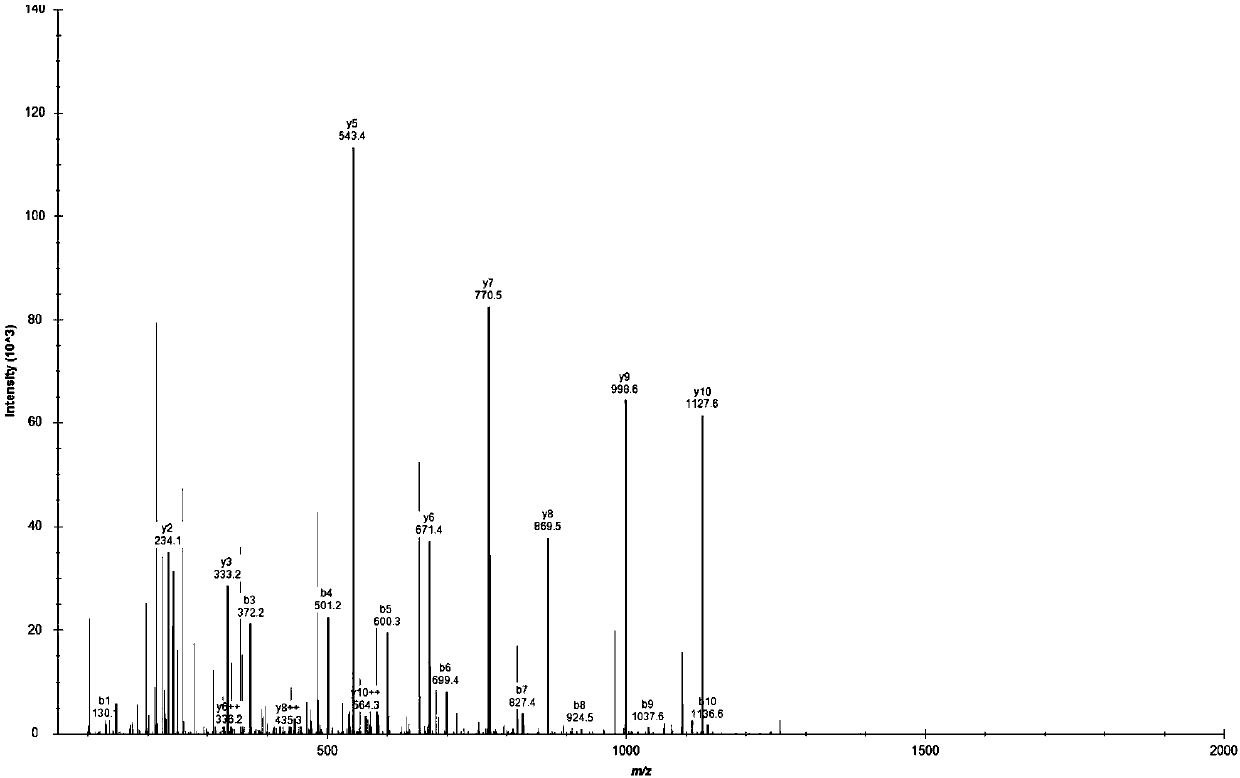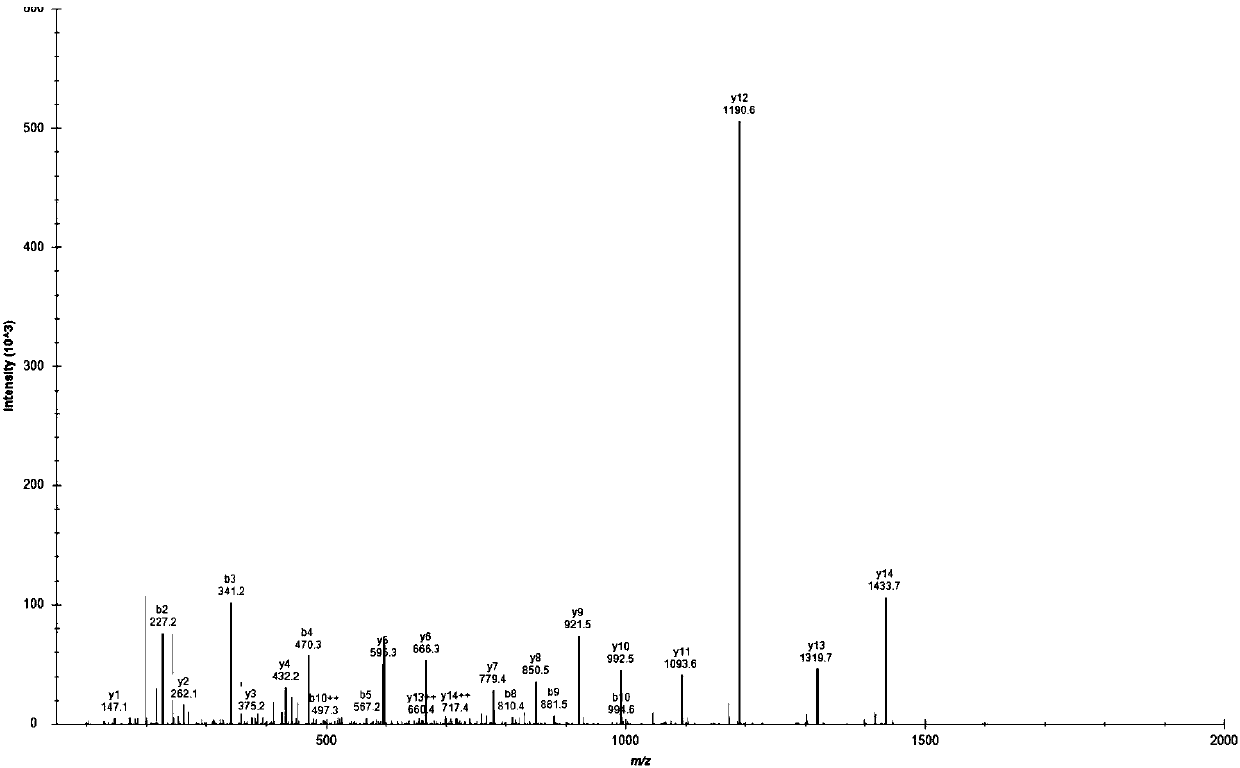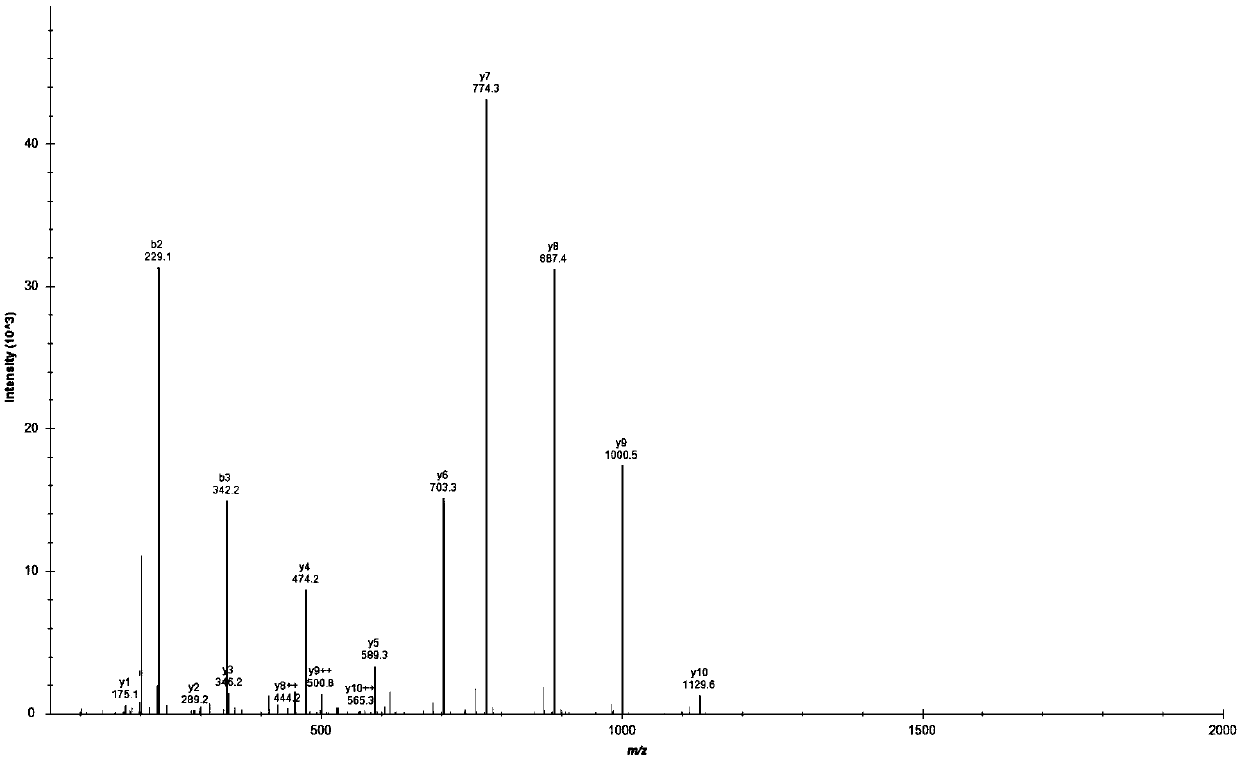Method for relative quantitative analysis of broiler chicken heat shock proteins HSPA5
A technology for quantitative analysis of heat shock proteins, applied in the field of relative quantitative analysis of broiler heat shock protein HSPA5, can solve the problems of long monoclonal control cycle, low success rate, high cost, etc., to improve protein detection throughput and efficiency, specificity Strong, eliminating the effect of cumbersome steps
- Summary
- Abstract
- Description
- Claims
- Application Information
AI Technical Summary
Problems solved by technology
Method used
Image
Examples
Embodiment 1
[0036] Example 1 A method for relative quantitative analysis of broiler heat shock protein HSPA5
[0037] In this embodiment, the method for the relative quantitative analysis of broiler heat shock protein HSPA5 comprises the following steps:
[0038] (1) HSPA5 protein extraction
[0039] Take 0.1 g of broiler liver tissue from the control group and the heat treatment group respectively (the liver samples of the heat treatment group are from broiler chickens treated at 33°C for 24 hours, and the liver samples of the control group are from broiler chickens treated at 25°C for 24 hours during the same period), according to 1: Add protein extraction buffer (50mM Tris-HCl, 0.5M NaCl, 10mM dithiothreitol, 1% dodecyl maltoside, pH 8.0) at a ratio of 5 (mass ratio), and extract in a water bath at 90-100°C The HSPA5 protein in the broiler tissue was homogenized for 15-30 minutes, centrifuged at 20,000 g at 4°C for 30 minutes, and the supernatant was taken, and the total protein in th...
Embodiment 2
[0047] Example 2 A method for relative quantitative analysis of broiler heat shock protein HSPA5
[0048] In this embodiment, the method for the relative quantitative analysis of broiler heat shock protein HSPA5 comprises the following steps:
[0049] (1) HSPA5 protein extraction
[0050] Take 0.1 g of broiler liver tissue from the control group and the heat treatment group respectively (the liver samples of the heat treatment group come from broilers treated at 33°C for 18 hours, and the liver samples of the control group come from broilers treated at 25°C for 18 hours in the same period), according to 1: Add protein extraction buffer (100mM Tris-HCl, 0.1M NaCl, 20mM dithiothreitol, 2wt% dodecyl maltoside, pH 7.2) at a ratio of 5 (mass ratio), and extract in a water bath at 90-100°C The HSPA5 protein in the broiler tissue under different treatments was homogenized for 15-30 minutes, centrifuged at 20,000 g at 4°C for 30 minutes, and the supernatant was taken, and the total p...
Embodiment 3
[0058] Example 3 A method for relative quantitative analysis of broiler chicken heat shock protein HSPA5
[0059] In this embodiment, the method for the relative quantitative analysis of broiler heat shock protein HSPA5 comprises the following steps:
[0060] (1) HSPA5 protein extraction
[0061] Take 0.1 g of broiler liver tissue from the control group and the heat treatment group respectively (the liver samples of the heat treatment group come from broilers treated at 33°C for 30 hours, and the liver samples of the control group come from broilers treated at 25°C for 30 hours in the same period), according to 1: Add protein extraction buffer (80mM Tris-HCl, 0.3M NaCl, 15mM dithiothreitol, 1wt% dodecyl maltoside, pH 7.5) at a ratio of 5 (mass ratio), and extract in a water bath at 90-100°C The HSPA5 protein in the broiler tissue under different treatments was homogenized for 15-30 minutes, centrifuged at 20,000 g at 4°C for 30 minutes, and the supernatant was taken, and the ...
PUM
 Login to View More
Login to View More Abstract
Description
Claims
Application Information
 Login to View More
Login to View More - R&D
- Intellectual Property
- Life Sciences
- Materials
- Tech Scout
- Unparalleled Data Quality
- Higher Quality Content
- 60% Fewer Hallucinations
Browse by: Latest US Patents, China's latest patents, Technical Efficacy Thesaurus, Application Domain, Technology Topic, Popular Technical Reports.
© 2025 PatSnap. All rights reserved.Legal|Privacy policy|Modern Slavery Act Transparency Statement|Sitemap|About US| Contact US: help@patsnap.com



